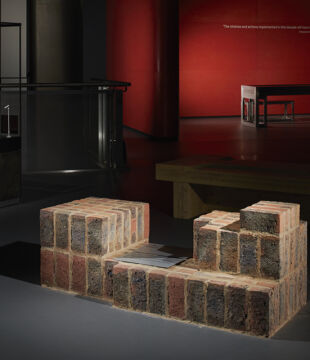
Details
Location: Willesden Green, London
Brick Manufacturer: Wienerberger Limited
Brick Name: Bamburgh Red Stock
Architect: James Alder Architects
Contractor: London Expert Builders Limited
About the project
Manber Jeffries House is an intricate, single storey, rear and side extension to the ground floor flat of a substantial, semi-detached, Victorian villa in Willesden Green, London.
The project, completed by James Alder in March of 2021, reworks a small area of the existing ground floor of the property and also provides a new kitchen and dining room extension that simultaneously operates as a vaulted garden room for the home.
The roof lines of the extension fall with the internal circulation requirements, allowing the extension to manage the transition from the high level of the existing property’s ground floor to the lower level of the garden beyond. The extension is also designed to fall in height, to match and relate to the steep pitch of an existing lean-to construction, which had previously contained a very small kitchen. Such an approach, along with a focus on minimising demolition where possible, convinced the planners to allow such a large, irregular volume to be added to the property. Due to covid, as well as further unforeseen construction difficulties, the project was on site for 12 months.
Key to the project was the retention and extension of a substantial brick party wall that had historically supported a symmetrical pair of pitched garden outbuildings and lavatories. These were already semi-demolished, and had been heavily neglected in recent decades. Victorian glasshouses and ancillary brick garden buildings, built as appendages to the boundary walls of formal gardens, formed a particularly strong inspiration for both the formal language and the materiality of the project.
Budgetary constraints demanded that an extreme rigour be applied to an informed use of standardised building components to form two contrasting skins that externally and internally line an ambitious structural steel framing configuration. Although heavily interdependent, the openings of the red clay brickwork and Dreadnought clay tiling of outer façade slide past the structural steelwork behind when they directly interface with either the host property or the party wall.
The exposed steelwork supports a complex roof geometry, and cantilevers in two directions to form an elaborate tectonic to the forming of openings to the garden beyond. A focus on detail, and a deliberate honesty and celebration of stark, layered construction is employed throughout.
Sponsored by Brick Awards

The Annual Brick Awards is an Architectural competition aimed at attracting and showcasing architects wishing to submit their brick projects for recognition and celebration. Attracting 300 entries in 17 hotly contested categories every year, it has become one of the most popular events in the construction calendar. If you wish to sponsor this award, please contact George Spreckley















